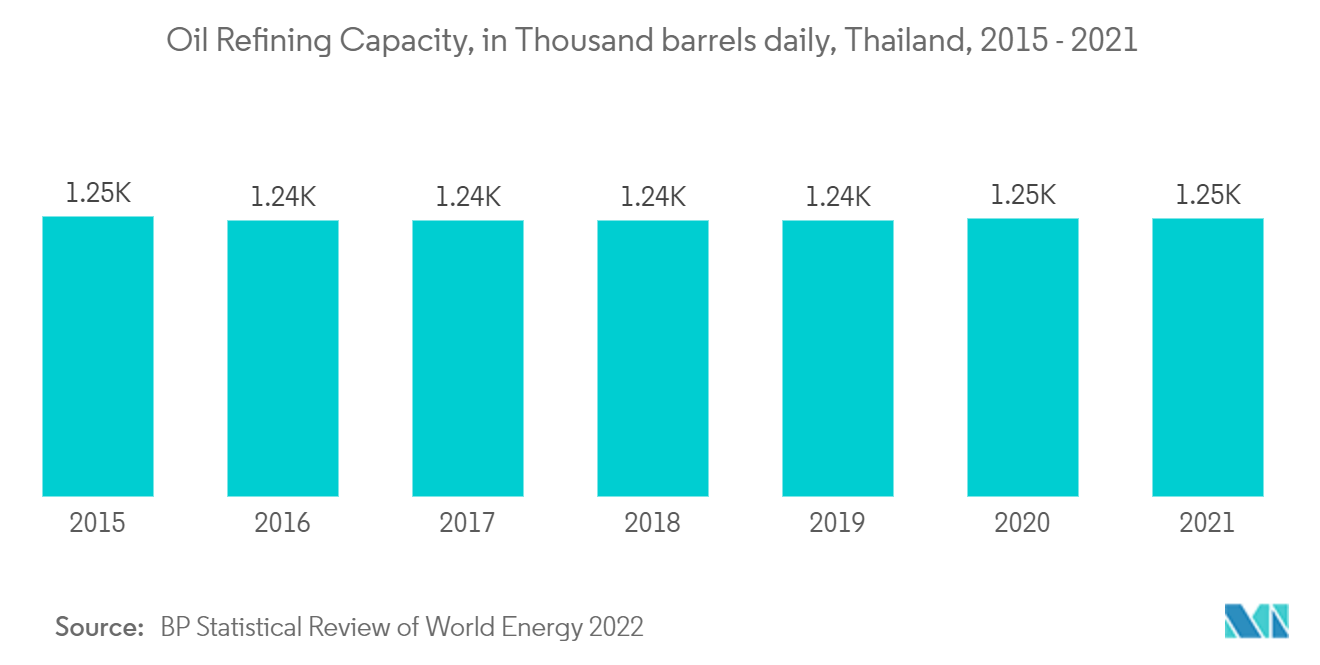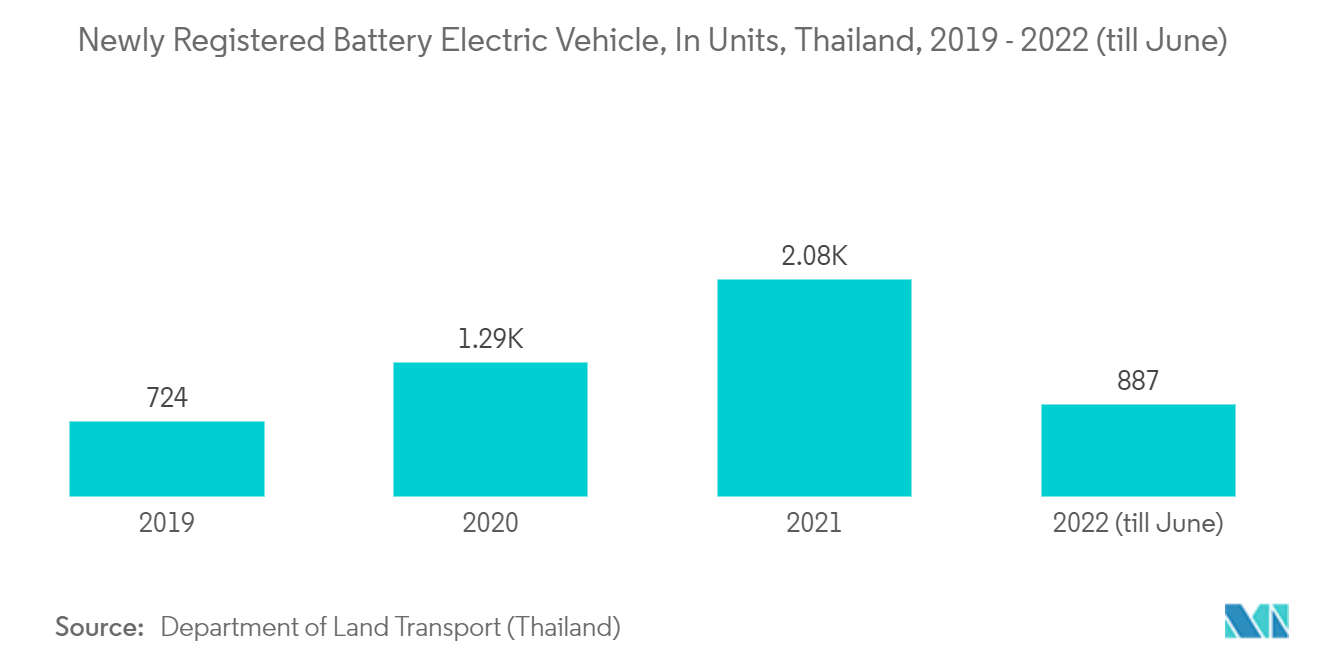Market Trends of Thailand Oil and Gas Downstream Industry
This section covers the major market trends shaping the Thailand Oil & Gas Downstream Market according to our research experts:
Oil Refining Capacity to Witness Growth
Thailand produces a large share of the petroleum it consumes but still relies on imports to meet the increasing demand. Demand for gasoline stood above 30 million liters a day in 2020, while fuel (diesel and gasoline) consumption took a plunge of 4.4% in the first ten months of 2021 to a daily average of 131 million liters, the same level as before COVID-19 level, according to Department of Energy Business, Thailand.
The refinery sector of Thailand is the second largest in Southeast Asia in refining capacity and throughput, just after Singapore. In Thailand, the refineries' capacity has remained relatively stable during 2016-2019, at 1,234,500 barrels per day in 2016, which increased to 1,244,500 barrels per day in 2021. The refinery throughput has been increasing in recent years. The country has six refinery complexes, the majority of which are owned partially or fully by the country's national oil and gas conglomerate PTT. The country has been actively increasing its refining capacity to meet its growing domestic and regional demand. For instance, the expansion project of Thai Oil's Sriracha refinery, a part of the company's Clean Fuel Project (CFP), is expected to have a total capacity of 400,000 b/d when completed at the end of 2023.
Thailand's oil refining capacity is expected to grow slightly during the forecast period due to the expansion of refineries and increased demand for refined oil.

Decreasing Oil and Gas Production to Restrain the Market
Thailand is trying to transform into 'Thailand 4.0,' whose industries transition to technological advances and high-level services. The government designated 'next-generation automotive' development among the top targeted industries and supported EV-related businesses to transform from internal combustion engine (ICE) vehicles to an EV production hub in Southeast Asia.
The electric vehicle (EV) industry is gaining interest in Thailand, supported by favorable government policies to push the EV market's growth. For example, the government of Thailand rolled out EV incentive schemes, i.e., tax benefits and subsidy systems, to propel the development of the EV market in the country.
The National Electric Vehicles Policy Committee 2020 introduced a roadmap that lays out a framework for Thailand's EV development from 2021-2035 to transform the country's well-established automotive supply chain for the production of zero-emission vehicles (ZEVs) and build the technological capacity for modern mobility. The roadmap covers not only EV production and usage but also developing plans for battery manufacturing and supplies, supporting infrastructure, including charging stations and power grid management, and the development of related safety standards and regulations to enable comprehensive and integrated implementation. EVs in the master plan covers various vehicles, including motorcycles, tricycles, buses, trucks, and ferry boats.
The Excise Department of Thailand has been applying an excise tax rate of 0% from 1 January 2020 to 31 December 2022 and 2% from 1 January 2023 to 31 December 2025 to electric-powered passenger vehicles with seating not exceeding ten seats which are promoted by the Board of Investment (BOI).
The country's newly registered battery electric vehicles grew from 724 in 2019 to 2,079 in 2021. With an increase in the number of EVs, the country is also witnessing a surge in the number of charging stations with rising investments from both the public and private sectors. According to EVAT, the country had over 664 charging stations with 2,224 chargers from 10 developers nationwide in June 2021. By 2036, the Thai government aims to have 690 charging stations and 1.2 million electric vehicles nationwide.
The transportation sector plays a vital role in Thailand's downstream oil and gas economy. Therefore, the adoption of EVs is expected to hamper the growth of the downstream oil and gas market in Thailand.


